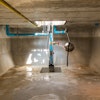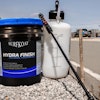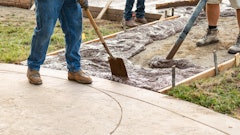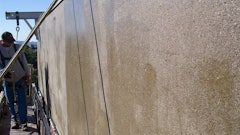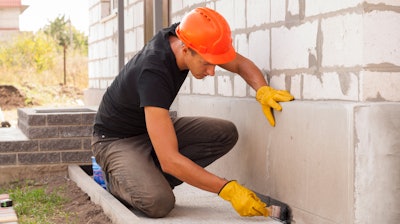
One of the most important things a property owner should know about their building maintenance is if the structure’s foundation is properly waterproofed. The second most important thing is to make sure the foundation is continuously waterproof. As a contractor who has worked with multiple property owners over the years, I can confidently say that no one wants to deal with a flooded basement. The last thing a homeowner wants to do is go into their basement and find their beloved belongings sitting in three inches of water because their foundation was not properly waterproofed or was poorly maintained.
The best way to prevent water damage in a person’s home is to create a waterproofing maintenance program. This plan includes a variety of checks that need to be done throughout the home or building that will ultimately ensure: the structure’s foundation is securely and properly installed; there are not any leaks or damage; the structure has the correct waterproofing preventatives in place and are working properly.
Visual Inspections
Visual inspections are the first part of a home’s waterproofing maintenance program. Simply checking a home by inspecting various components of the structure will prove hugely beneficial in ensuring that it is properly waterproofed and that any new changes that could lead to leaks or flooding are caught quickly.
 Matt DiBara
Matt DiBara
The following components should be included within any routine inspection.
- Window wells, well drains, and basement windows. There should not be any water contained in the window wells. If there is, the window well drains might be clogged or covered by various debris that may have gotten in the window well.
- Exterior concrete. Note any cracks or leaks. Even if a crack is not leaking at the moment, water could filter in eventually and create a leak or even cause the crack to become larger. Also, note any leakage or damage on the foundation walls that may have occurred from settling.
- Any damp or unfinished crawl spaces. These spaces may have water accumulated or any mold that may have formed from moisture. An easy way to check this is to see if there is a funky smell.
- The water heater. Homeowners should drain or flush their water heaters every six to 12 months to get rid of any sediment build-up. This will prevent a burst pipe, keep the water heater from having to work harder, and avoid loss of water pressure.
Conduct Tests & Routine Maintenance
Once visual inspections are complete, the next part of the maintenance plan should include a variety of tests to parts of the home.
 Matt DiBara
Matt DiBara
- Clean and test the storm sump pump. Ensure that sump pumps should displace the water that comes towards a house at least 10 ft. away from the home.
- Flush and test the discharge line. This will ensure that the water is actually flowing away from the home properly and not getting stopped up too close to the property. Checking on this is also important so that the home’s water is not getting displaced into a neighbor’s property by accident.
- Test the ejector pump. If there seems to be an issue, I recommend adding a screen in the pump to prevent any clogging that may occur from large particles.
Level Checks
The last phase of a proper waterproofing maintenance plan is to check the levels of various appliances that keep a house waterproofed.
 Matt DiBara
Matt DiBara
The first item your clients need to check is the battery level and operation of their home’s backup pump. In case a home’s sump pump stops working, the backup pump can save a homeowner from dealing with soaking wet carpet or hardwood flooring, ruined drywall, and mildew or molding that may result from a poorly waterproofed home.
Secondly, replace the batteries of the home’s high water alarm. Most high water alarms have an indicator light that shows the alarm has power and is working properly. But these need to be checked frequently to ensure the battery does not need to be replaced.
Then your clients should look into the humidity levels in their homes to prevent mold and other unpleasant odors. Mold is prone to grow in dark, damp places that result from a humid environment. Having mold in a home can not only destroy walls or belongings but can cause a variety of health issues and should be taken seriously.
Lastly, they should look into the property’s yard drainage and the downspout extensions. These take the water that is collected from the house’s gutters and displace the water away from the home. Make sure the downspouts are still properly connected to the gutter drainage system to ensure they are able to serve their purpose of displacing the water.
Homeowners who follow your advice regarding a waterproofing maintenance program or a variation of these steps will be able to notice any water getting into their home and prevent future flooding. Advise them to check their property for leaks or signs of water damage once every two years. However, if a property is much older or has older waterproofing appliances in place, then this plan should be implemented more frequently.
Generally speaking, flooding and water damage can be prevented if homeowners take the time to be proactive and pay attention to their home’s waterproofing systems.
About the author
Matt DiBara is a fourth-generation mason of DiBara Masonry and the creator of The Undercover Contractor. He has worked on some of the most prestigious and well-known celebrity homes in the city of Los Angeles, in addition to restoring several of Hollywood's most famous cultural landmarks.



